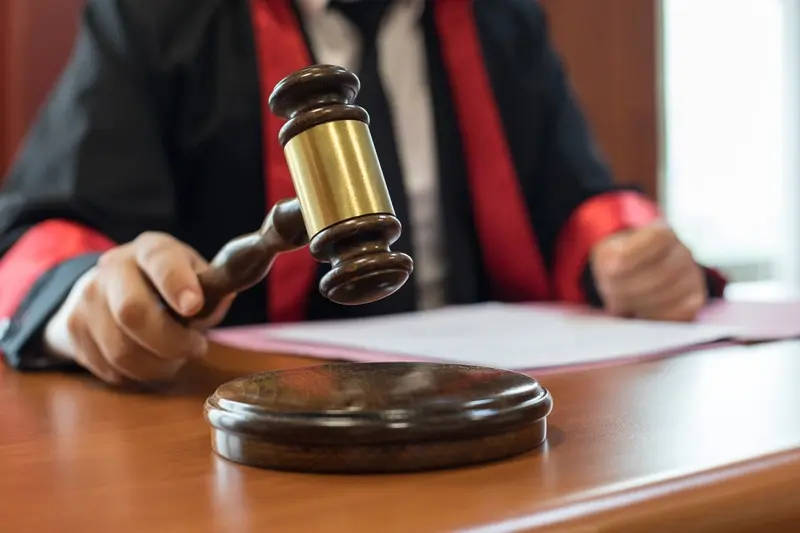What's The Difference Between Copyright And Patents For Apps?
Every day, thousands of brilliant mobile app ideas are created, but only a fraction of developers properly protect their intellectual property. The mobile app industry is worth billions, yet most creators don't understand the basic difference between copyright and patents—two completely different types of protection that serve unique purposes. This confusion can cost you dearly.
When you build a mobile app, you're creating something that could potentially be worth millions. But without proper protection, competitors can legally copy your work, steal your ideas, or even claim them as their own. The problem is that many developers think copyright and patents are the same thing. They're not.
Understanding intellectual property protection isn't just about legal compliance—it's about securing your app's future and ensuring you can actually benefit from your hard work
Copyright protects your app's code and creative elements, whilst patents protect innovative functionality and processes. Choosing the wrong protection—or worse, choosing none at all—can leave your app vulnerable to copycats and competitors. Throughout this guide, we'll break down exactly what each type of protection covers, when to use them, and how to apply for both. By the end, you'll know exactly how to safeguard your mobile app's intellectual property and avoid the costly mistakes that trip up most developers.
What Is Copyright for Mobile Apps
After building mobile apps for over eight years, I've seen countless developers get confused about what copyright actually protects in their apps. Let me clear this up for you—copyright automatically protects the creative parts of your app the moment you create them.
Copyright covers your app's source code, user interface design, graphics, music, and any written content like help text or tutorials. Think of it as protection for the creative expression of your ideas, not the ideas themselves. Your beautifully crafted login screen? Protected. That clever bit of code you wrote to handle user authentication? Also protected.
What Copyright Protects in Your App
- Source code and programming scripts
- User interface designs and layouts
- Graphics, icons, and visual elements
- Audio files and sound effects
- Written content and help documentation
- Database structures and arrangements
The brilliant thing about copyright is that it happens automatically—you don't need to file paperwork or pay fees. The moment you write that first line of code or design that first screen, you own the copyright. That said, registering your copyright can give you stronger legal protection if someone copies your work.
Copyright lasts for your lifetime plus 70 years, which means your app's creative elements are protected for a very long time. But here's the catch—copyright won't protect your app's functionality or innovative features. That's where patents come in, but we'll cover that in the next chapter.
Understanding Patents for Mobile Apps
Right, let's talk about patents for mobile apps—this is where things get a bit more complicated than copyright. Patents protect inventions and new ways of doing things, not just creative work. For mobile apps, this means you can patent unique features, algorithms, or technical processes that your app uses to solve problems.
Now, I'll be honest with you—getting a patent for a mobile app isn't straightforward. Your app needs to do something genuinely new and innovative. Just having a shopping app won't cut it, but if your app uses a completely new method for processing payments or a revolutionary way to compress images, that might be patentable.
What Can You Patent in Mobile Apps?
Here's what you might be able to patent:
- Unique algorithms or processes
- New ways of solving technical problems
- Innovative user interface methods
- Novel data processing techniques
- Original system architectures
Patents last for 20 years from the filing date, which is much longer than copyright's automatic protection. But here's the catch—patents are expensive, time-consuming to get, and you need to prove your invention is truly original.
Before spending money on a patent application, do a thorough search to make sure your idea hasn't already been patented. Patent offices have databases you can search for free.
The reality is that most mobile apps don't need patents. Unless you've created something genuinely groundbreaking, copyright protection is usually sufficient for protecting your app's intellectual property.
Key Differences Between Copyright and Patents
After years of helping app developers protect their work, I've noticed that most people get confused between copyright and patents—and honestly, I don't blame them! They're both types of intellectual property protection, but they work in completely different ways and protect different parts of your app.
Copyright protects the creative expression in your app: the code you write, the artwork you create, the music you compose. It happens automatically the moment you create something original. You don't need to file paperwork or pay fees. Patents, on the other hand, protect inventions and new ways of doing things. They require a formal application process that can take years and cost thousands of pounds.
Protection Duration and Scope
The length of protection differs massively between these two options. Copyright lasts for decades—typically the creator's lifetime plus 70 years. Patents only last for 20 years from the filing date, but they give you much stronger protection during that time.
| Aspect | Copyright | Patents |
|---|---|---|
| What it protects | Creative expression, code, artwork | Inventions, processes, functions |
| Duration | Lifetime + 70 years | 20 years from filing |
| Application required | No (automatic) | Yes (formal process) |
| Cost | Free | Thousands of pounds |
Copyright stops others from copying your exact work, whilst patents prevent anyone from using your invention—even if they came up with the same idea independently. For most app developers, copyright provides the basic protection you need without the complexity of patent applications.
Which Protection Works Best for Apps
After years of helping app developers navigate intellectual property protection, I can tell you there's no one-size-fits-all answer. The truth is, most successful apps need both copyright and patent protection—they work together rather than competing against each other.
Copyright protection happens automatically the moment you create your app's code, design elements, and written content. It's free, immediate, and covers the creative expression of your idea. Patents, on the other hand, protect the functional aspects—the unique technical solutions your app provides.
When to Focus on Copyright
If your app's main value lies in its content, user interface design, or creative elements, copyright might be your primary concern. Think content apps, games with unique artwork, or apps with distinctive visual designs.
When Patents Make Sense
Apps with novel technical features, unique algorithms, or innovative functionality should consider patent protection. This includes apps that solve technical problems in new ways or introduce groundbreaking features to the mobile space.
The best protection strategy combines both copyright and patents, creating multiple layers of intellectual property defence for your mobile app
Most app developers I work with start with copyright protection since it's automatic and free, then evaluate whether their technical innovations warrant the time and expense of patent applications. The key is understanding what makes your app unique and protecting those specific elements appropriately.
The Application Process for Both Types
Right, let's talk about actually applying for these protections—because knowing about copyright and patents is one thing, but getting them sorted is another matter entirely. The good news? Copyright protection happens automatically the moment you create your app's code, design, or written content. No forms to fill out, no fees to pay, no waiting around for approval. It just exists.
Patents are a completely different beast. You'll need to file a formal application with the UK Intellectual Property Office (or USPTO if you're in America). This involves detailed technical descriptions of your invention, drawings if needed, and—brace yourself—quite a bit of money. We're talking thousands of pounds, not hundreds.
What You'll Need for Patent Applications
- Detailed technical specification of your invention
- Professional drawings or diagrams
- Claims defining what you want to protect
- Application fees (which can add up quickly)
- Patience—the process takes 2-4 years typically
Here's what I tell my clients: start with a patent search first. There's no point spending money on an application if someone else already owns similar technology. Patent attorneys can help with this, but they don't come cheap either. Budget at least £10,000-£15,000 for a decent patent application in the UK.
Copyright registration is optional but can be useful for legal disputes—you can register with the Copyright Service for under £50.
Common Mistakes App Developers Make
After working with hundreds of developers over the years, I've noticed the same intellectual property mistakes cropping up again and again. The most common one? Waiting too long to protect their work. Many developers think they need to have a finished app before they can file for patents or copyright protection, but that's simply not true.
Another big mistake is not understanding what can actually be protected. I've seen developers try to patent basic features that already exist in other apps—that's money down the drain. Copyright protects your code and creative elements, whilst patents protect unique functionality and processes. Getting these mixed up leads to wasted time and resources.
Documentation Disasters
Poor documentation is another major pitfall. Developers often fail to keep detailed records of their development process, which makes proving ownership much harder later on. You need timestamps, version histories, and clear records of who contributed what to your app.
Start documenting your app development process from day one—including sketches, wireframes, and code commits with proper timestamps.
- Filing for protection too late in the development cycle
- Misunderstanding what copyright versus patents actually protect
- Not keeping proper development documentation
- Trying to patent features that aren't genuinely innovative
- Ignoring international protection requirements
The biggest tragedy? Most of these mistakes are completely avoidable with proper planning and understanding of intellectual property basics.
How to Protect Your App's Intellectual Property
Right, let's get practical about protecting your app. You can't just build something brilliant and hope nobody copies it—that's wishful thinking at best. I've watched too many developers skip this step only to see their hard work copied by competitors who moved faster to market.
The good news is that protecting your app isn't rocket science, but it does require some planning. Start by documenting everything during development. Keep records of your code, design decisions, and unique features. This creates a paper trail that proves when you created what.
Your Protection Strategy
Most apps need a combination of copyright and patent protection, not just one or the other. Copyright happens automatically when you write code, but patents require applications. Think of it like wearing both a belt and braces—you want multiple layers of protection.
- Register your copyright early, even though it exists automatically
- File provisional patents for unique features or processes
- Use non-disclosure agreements with anyone who sees your app
- Consider trademark protection for your app name and logo
- Keep detailed development records and version histories
Don't Wait Until Launch
The biggest mistake I see is waiting until launch to think about protection. By then, you've already shared your app with testers, shown it to investors, and possibly leaked details that could weaken your position. Whether you're working with remote developers or managing an in-house team, protecting your app idea should start from day one of development, not day one of launch.
Conclusion
After eight years of helping clients protect their mobile apps, I can tell you that understanding the difference between copyright and patents isn't just legal jargon—it's a business necessity. Copyright protects your code, your design, your creative work automatically from the moment you create it. Patents protect your innovative ideas and processes, but they require applications, fees, and quite a bit of patience.
Most app developers will rely heavily on copyright protection because it covers the bulk of what makes an app unique: the source code, the user interface, the graphics, and the overall creative expression. Patents come into play when you've genuinely invented something new—a novel algorithm, a unique technical solution, or an innovative way of solving a problem that nobody has thought of before.
The reality is that many apps don't need patent protection at all. But every single app benefits from copyright protection whether you file paperwork or not. The key is knowing which intellectual property tools serve your specific situation best and not wasting time or money on protection you don't actually need.
Remember, protecting your mobile app's intellectual property isn't about being defensive—it's about being smart with your business assets and giving your app the best chance to succeed in a competitive market.
Share this
Subscribe To Our Learning Centre
You May Also Like
These Related Guides

Am I Legally Responsible for What People Do on My App?

What Are the Legal Requirements for a Mobile App?



